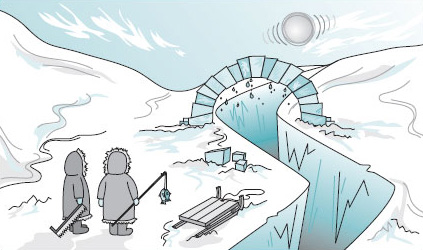1 Temperature – problem or solution?
'Have you taken the temperature effects into account?' (Figure 1) is nearly always a valid question in any discussion about a proposed engineering solution. Everything has a temperature, and everything behaves differently at different temperatures. It therefore deserves its own special place.

Almost whatever we do, wherever we are, the temperature changes. Stay in the same spot and you'll find the daytime temperature can be markedly different from that at night; you may even find a variation from hour to hour as weather systems move through, or heating systems fail. Moving around is not necessarily any better, and can expose us to even wider ranges of temperature. An airliner may leave the ground where the temperature is in the high twenties Celsius and climb within minutes to a height where the outside temperature is minus fifty.
It turns out that almost all materials properties change with temperature. So, anything you make will to some extent be sensitive to temperature and may well be acting (inadvertently) as some kind of thermometer.
There are advantages and disadvantages to thermal sensitivity. On the one hand we can do amazing things with thermal energy such as using it to fly without an engine (I'm thinking of gliders) or to move the matter within a solid without necessarily changing its shape or melting it. The latter is used to great effect in manipulating the properties of steels, glasses and semiconductors. On the other hand, thermal energy can be a real nuisance. It can make magnetic disks 'forget' recorded data, and it can cause joints to become loose or unstuck.
The relationships between various material properties and temperature do not all follow the same trends, and there are intriguing reasons for this that we will take this opportunity to examine. We shall also be looking at the practical implications of these different kinds of relationship by working through a real-world engineering problem. This will exercise your mathematical abilities and, I hope, convince you of the usefulness of mathematical modelling.
